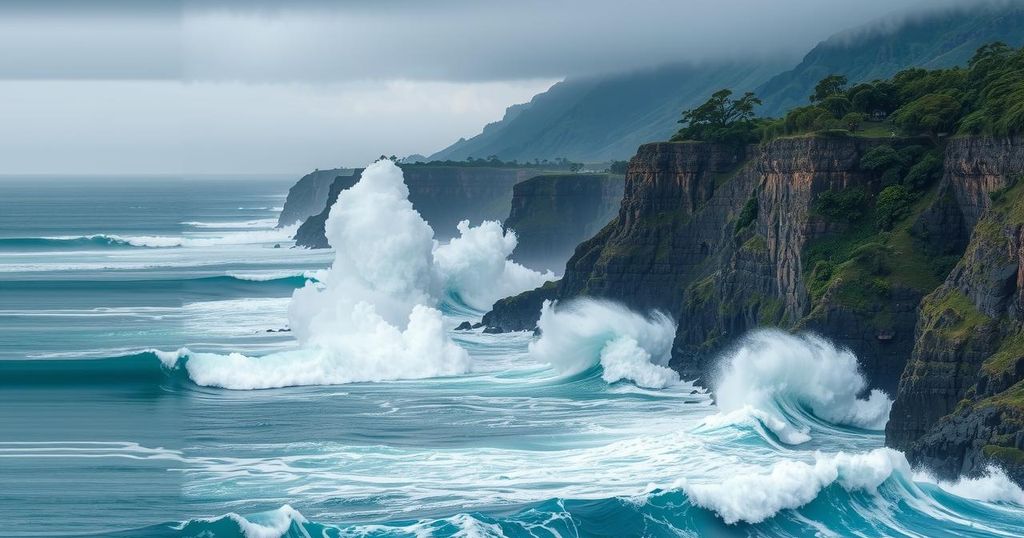Severe waves up to 13 feet hit Ecuador and Peru, resulting in two fatalities and the closure of numerous ports. Ecuador’s officials warned of future similar events, while Peruvian authorities reported extensive damage to fishing fleets and beach closures. The phenomenon, attributed to climate change, began on Christmas Day and is expected to last until January 1.
Severe waves reaching up to 13 feet have struck the coasts of Ecuador and Peru, leading to the closure of numerous ports and resulting in the tragic deaths of at least two individuals. Authorities report that an ‘extreme event’ is underway, with significant disruptions observed in both nations. In Ecuador, the fatalities occurred in the Manta region, while in Peru, almost all ports were shuttered due to the relentless waves. Authorities had to remind citizens to stay vigilant as hazardous conditions persist.
Jorge Carillo, Ecuador’s Secretary for Risk Management, stated that similar extreme weather events may manifest in the future. In Peru, the naval Oceanographic Department’s Enrique Varea anticipated that while the waves would continue for the next few days, conditions are expected to normalize by early January. The Civil Defense unit of Callao, Larry Linch, indicated that climate change is a significant factor contributing to these anomalous waves. Reports from local media showcased public spaces engulfed by water, prompting residents to evacuate to safer areas.
The waves originate from the U.S. coast, stirred by winds over the ocean’s surface, according to the Peruvian navy. To mitigate risks, authorities have closed numerous beaches along the central and northern coastlines. Fishermen have reported nearly 100 boats damaged, with many unable to operate due to the perilous conditions. A veteran fisherman noted, “I am 70 years old and I have never seen such unusual and strong waves.” Rescue operations were conducted for stranded fishermen, although reports indicated that many still remain at sea.
The wave phenomenon initiated on Christmas Day and is anticipated to persist until January 1, as emphasized by Peru’s National Emergency Operations Center. The situation has prompted stern warnings from officials in both nations about the potential economic impact, particularly on the fishing communities. The Mayor of La Cruz, Roberto Carrillo Zavala, expressed deep concern for those affected, asserting, “There is a major problem.”
The occurrence of large waves along the coasts of Ecuador and Peru has raised considerable alarm among local officials and residents. Such natural phenomena are not only dangerous but also have significant implications for maritime activities and the economy, particularly in regions heavily reliant on fishing. Recent studies indicate that climate change is influencing weather patterns globally, leading to unpredictable and extreme maritime conditions. This unprecedented wave activity has necessitated swift action from authorities, including port closures and public safety advisories, to mitigate the risks posed to lives and livelihoods along the affected coastlines.
In conclusion, the extraordinary wave activity impacting the coasts of Ecuador and Peru has resulted in tragic fatalities, substantial disruptions to port operations, and economic challenges for local fishing communities. With predictions indicating the continuation of these extreme conditions, authorities are urged to implement preventive measures to safeguard public safety and manage the economic ramifications. The situation serves as a critical reminder of the interaction between climate change and extreme weather events.
Original Source: www.hindustantimes.com






